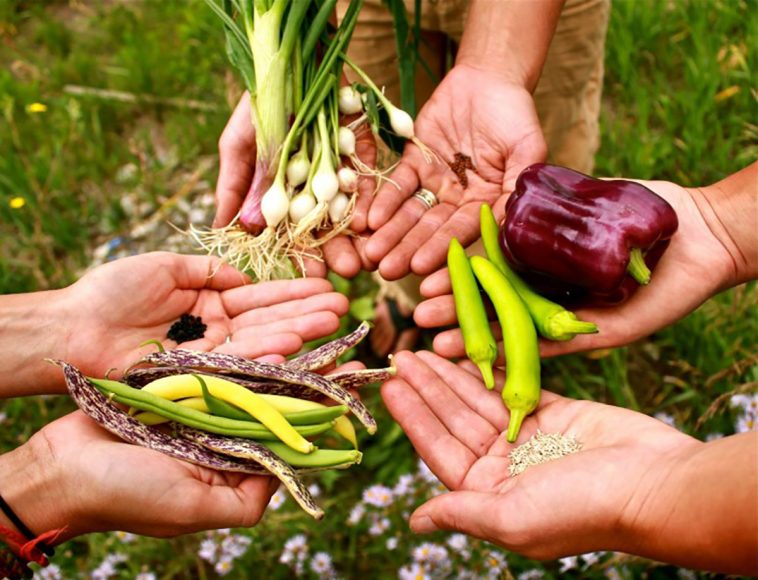Seed saving is fun and yes, frugal, but above all it is a fundamental way to both connect with the garden and play your part in saving the planet and its biodiversity, writes ethnobotanist Fiann Ó Nualláin.
Gardening should be about getting your hands dirty – to engage in all the aspects, from making your own compost to sowing your own collected seed. In the words of gardening poet Alfred Austin (1835-1913):
“The glory of gardening: hands in the dirt, head in the sun, heart with nature.”
Well, seed collecting is a glory too. Seed collecting is attuning to nature. You get to know your plants, their life cycles and seasonality. You get to really connect with your garden, be a part of its origin story in a way that merely constructing doesn’t fulfil. If you are going to garden it shouldn’t only be about crafting a pretty picture, the occasional nipping to garden center to add a few ready-mades to the scene. Sure, the art of placement and preening is a part of it all but the bigger picture is about the
dynamics of cultivation, that’s where the real rewards are.
Ecological commitment
Seeds too are about the present, and yes as a mindful gardener I get to find some awe and focused attention in the process but in terms of the now, this epoch where climate change is on the knife edge, the return and exploration of the natural and less industrial is essential.
Seed saving is an envelope or a paper bag, that’s a far cry from chemically fertilised plants, driven miles in plastic pots on trolleys wrapped in plastic to places you need to drive to get to. Seed saving is also the preservation of genetic diversity, those marigolds you save every year from a plant granny gave you, or the juicy tomato
Bob from work gave you as a seedling, may not be found in every seed catalogue.
A lot of the seed catalogues sell f1 hybrids and other varieties that don’t “come true”. That means they won’t grow up to be just like the parent plant. Plus there is the terrible new trend of GMO seeds that germinate a crop but don’t go on to yield saveable seed so self-sufficiency is denied to farmers and gardeners.
We don’t know what unique plants or threatened traits are in the hands of one or two gardeners the sweet pea almost lost its scent when plant breeders intervened to make them flower longer; it had to be bred back in from growers who had kept the fragrant strains going.
Choosing ripe seeds
Some seeds are sown immediately but most have an in-built delay mechanism to extend viability, i.e its ability to store and germinate later. All seeds go through three stages: formation, maturation and ripening and the key to seed saving success is
knowing when the seed is ripe.
It is best to only gather seed from the best looking and performing specimens, to keep up a gene pool of healthy and vigorous plants in your garden.
In the case of crops like peas and beans, we harvest to eat at the tender and juicy stage two – before it fully ripens into a hard seed. To save to grow again, simply wait a few weeks longer than normal.
Fruit and berries are harvested at the stage when the fruit reaches its full colour – when the juniper berry turns blue-black, the red pepper to fully red or the orange tomato into fully orange. And before the birds hone in on them to forage.
Most veg and herbs will “come true” from collected seed. But with ornamentals, hybrid plant seeds will either give you a pleasant surprise or a shock. That rich-red hybrid favourite may yield a washed-out salmon offspring or come up a fantastic maroon. In most instances, ornamental seeds will ripen around two months after flowering.
Viability is generally attained when the seed heads/pods dry or change colour from green to beige or brown. The seeds inside may become hardcased and will also change colour from green, white or yellowy to a definite brown, black or steely grey.
Harvesting and drying
Late summer to late autumn is usually the time to start harvesting with the ideal conditions being dry weather – damp seed can rot or start germination in storage. Morning or evening is of no consequence – just dry.
Simply snip into a paper bag, note the variety on the side and bring inside. You will then need to let it dry out a bit more so an air cupboard is good for a few days.
Some people like to shell pods and empty out seed heads straight away onto tissue paper and space out before storing in a dry location for several days. Once dry, you can simply store in a clean envelope with the name and collection date.
That’s it. The next joy is sowing in a few months’ time.







